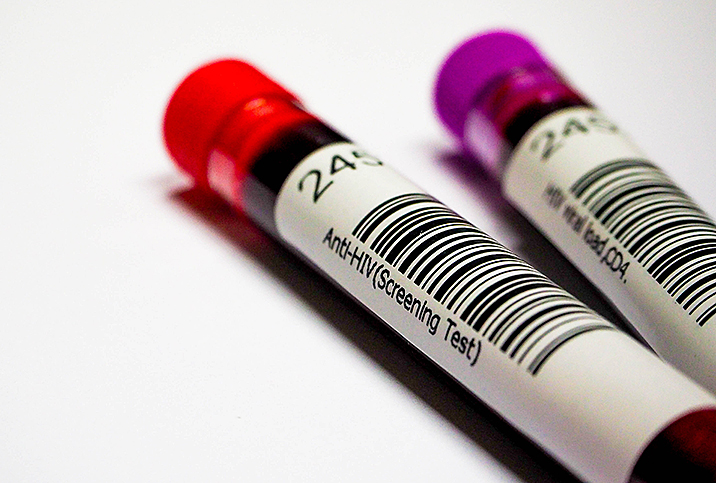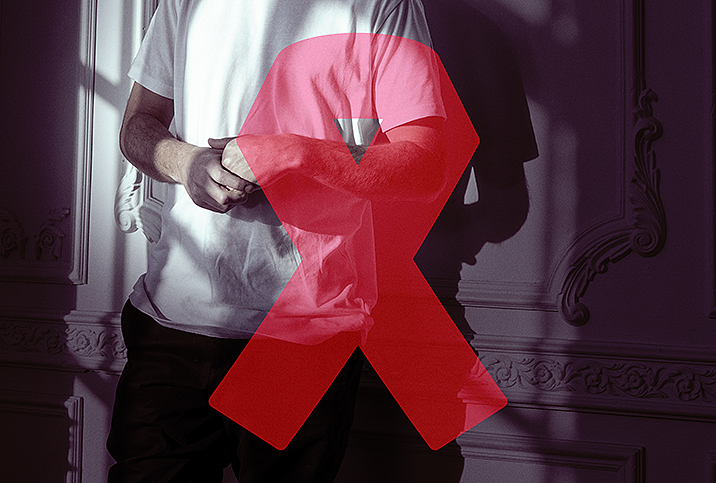6 Guidelines for Pregnant Women With HIV/AIDS

Human immunodeficiency syndrome (HIV) is a virus that, as the name would suggest, fights and weakens the immune system in humans. As the immune system gets weaker, its ability to defend the body from infections is compromised, eventually making a person with HIV defenseless against even the mildest infection.
Once the immune system is weakened, acquired immune deficiency syndrome (AIDS) sets in. Opportunistic diseases such as tuberculosis, pneumocystis pneumonia or lymphoma can then attack to weaken the body further. However, people diagnosed early with HIV have medical options available to increase their chance of surviving longer.
If you are a new or expectant mother, or you're hoping to get pregnant, you face a complicated set of circumstances, as it's possible for you to pass the virus to your baby during pregnancy, at the time of birth or even when breastfeeding.
However, modern medicine has made it possible for mothers living with HIV/AIDS to have children without transmitting the virus to them.
1. Start antiretroviral HIV treatment when you are diagnosed with HIV
The moment you learn you are HIV positive, you should seek antiretroviral (ARV) HIV treatment, as this will help keep your general health in good shape. The treatment is aimed at keeping a low viral load in your system.
With a low enough viral load, there is a 1 in 1,000 chance of affecting the baby in the womb or during delivery. The optimal viral load for an HIV-positive woman wishing to get pregnant is fewer than 20 copies per ml, and that level of HIV is undetectable on most modern HIV tests. To achieve this, you need to take ARVs for an extended period of time before getting pregnant, which is why starting early is recommended.
2. Keep up with the antiretroviral medications before conception
As you plan to conceive, you should keep up with the ARV medication to strengthen your body for pregnancy. If you are inconsistent with ARV medication, do not conceive until after you've committed to a regular treatment schedule.
If you find yourself pregnant while having a high viral load due to taking ARVs inconsistently, resume the medication as soon as possible.
3. Plan ahead for extra care during delivery
Certain delivery procedures can result in scratches or cuts on the baby's skin. Extra care should be taken so there is no blood mixing during the delivery. Be sure to get prenatal care, and start talking with your doctor about viral load numbers and necessary precautions before your due date.
If you get pregnant while having a high or detectable viral load, such as 1,000 copies/ml, it's advisable to opt for cesarean delivery (C-section) to prevent the risk of blood mixing, which can be high during vaginal birth. Additionally, a C-section is the best route if you were not consistent with ARV treatment before or during the pregnancy.
It is also the recommended method if you are experiencing obstetric delivery complications—for example, if the baby is in the breech position. Furthermore, go for a C-section if you have complications from any other illness.
4. Give ARV medication to the baby for about a month
Under the aegis of your doctor, you should give your baby ARV medication for about four weeks after birth. The treatment is called PEP, or Post-Exposure Prophylaxis, which remarkably lowers the chance of the baby getting an HIV infection.
Along with the treatment, the baby should be regularly tested for HIV until they are 18 months old.
5. Seriously consider not breastfeeding
There is a low risk of mother-to-baby HIV transmission during breastfeeding if the mother has a low, undetectable viral load. However, you should still consider alternatives to breastfeeding even if your viral load is low, just to be safe.
Although there's no data to indicate the likelihood of transmission via breastfeeding, breast milk can contain HIV. Another factor is cracked nipples, a common occurrence among breastfeeding mothers—the virus may shed through these wounds and transmit to your child.
You may be saddened by being unable to breastfeed your baby, but your child's healthy future is worth the sacrifice.
6. Be prepared for a possible HIV-positive diagnosis
Modern healthcare has made mother-to-baby HIV transmission rare, but should it happen, look for specialized medical care for the baby. It's helpful if the diagnosis is made early, so the baby can begin timely treatment to increase their chances of a long, healthy life.
HIV-positive mothers can give birth to HIV-negative babies, but there are necessary extra steps to reduce the chance of passing the virus to the baby. Research on HIV and conception is still ongoing, so keep an eye out for the latest information from recognized medical sources.


















